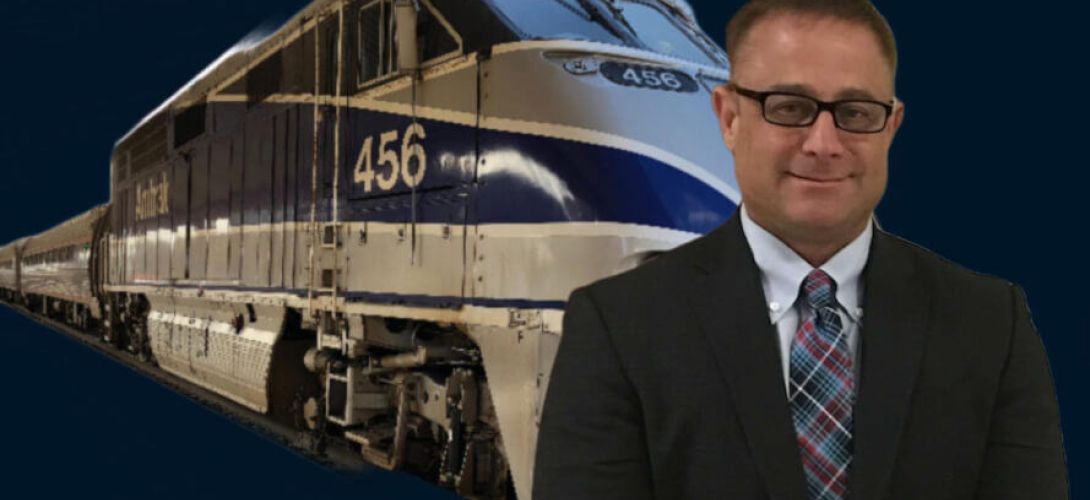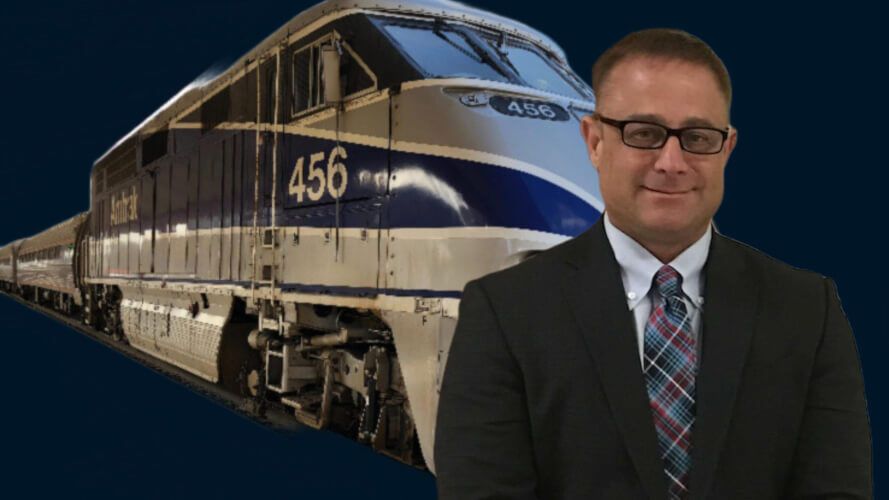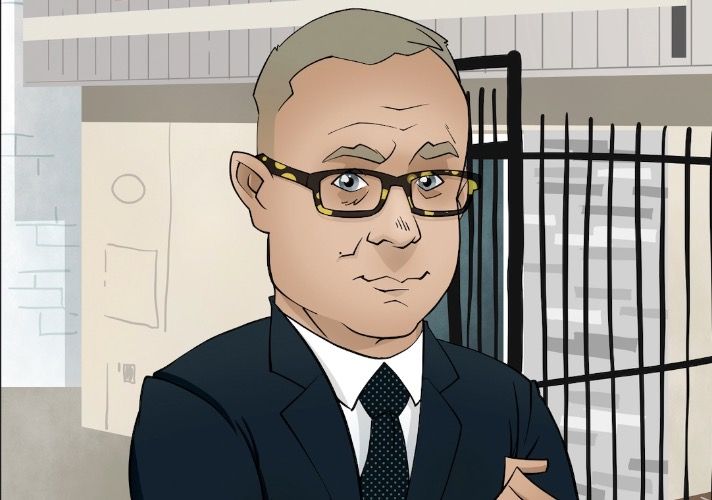
Railroad Accidents: Common Causes, Statistics, and Prevention

Railroad Accidents: Common Causes, Statistics, and Prevention
Railroad accidents can have devastating consequences, causing serious injury or even death. Although not as common as motor vehicle accidents, unfortunately, these accidents occur more frequently than people realize, affecting the lives of many families and, in some cases, entire communities.
Ehline Law and our railroad accident attorneys have over 15 years of experience working with injured passengers and their family members in building strong cases and pursuing the justice and compensation they deserve.
Our guide on “Railroad Accidents: Common Causes, Statistics, and Prevention” will take a closer look at the common causes of railroad accidents, examine some statistics related to these types of accidents, and explore some tips on how people can prevent getting into rail accidents.
Whether you are a railroad worker, commuter, or someone who lives near railroad tracks, understanding the causes of these accidents and how to prevent them can help keep you and your loved ones safe.
The Great Train Wreck of 1918
The Great Train Wreck of 1918 was among the worst train accidents in United States history. The incident occurred on July 9, 1918, in Nashville, Tennessee, and resulted in the deaths of at least 101 people, with many more injured.
The accident involved two passenger trains, the No. 4 on route to Memphis and the No. 1 headed for New York, both operated by the Nashville, Chattanooga, and St. Louis Railway. The two trains collided while traveling on a track called a “Dutchman’s Curve” track west of downtown Nashville.
At approximately 7:20 a.m., the two trains collided head-on at around 50 miles per hour, leading to a train derailment with several wooden cars destroyed.
The accident site was chaotic, with passengers trapped in the wreckage and many injured or dying. Rescue crews rushed to the scene, and doctors and nurses from nearby hospitals and military installations came in to help.
According to the findings of the investigation carried out by the Interstate Commerce Commission, negligence and human error were the leading cause of the devastating railway accident. The crew in the No. 4 train made serious errors, and the interlocking tower operators did not account for the No. 1 train on the same track, which led to the railway accident. The tragedy profoundly impacted the nation, with many families mourning the loss of loved ones.
The Great Train Wreck of 1918 remains one of the deadliest train accidents in US history, and it prompted significant changes in safety regulations and protocols.
Train Accident Statistics
- According to the Federal Railroad Administration (FRA), there were 1,670 train accidents in the United States in 2020, resulting in 744 fatalities and 5,555 injuries.
- The fatalities in 2021 increased to 893, a 20% increase since 2020. 26% of the deaths occurred at railroad crossings, and during 2021, there were 3,216 nonfatal occupational railroad injuries and six passenger train deaths.
- According to the FRA, some of the most common causes of train accidents in the United States include defective equipment, absence of an operator or failure to apply brakes by railroad employees (human negligence), broken rail or rail track vandalism, and motor vehicles.
- In 2022, there were 2,178 highway-grade crossing accidents, resulting in 273 fatalities and 763 injuries.
Although the overall number of train accidents has gone down over the past few decades due to improved safety measures, when train accidents happen, they can be devastating and result in serious injuries or fatalities. The railroad industry and the federal government must prioritize and enforce safety measures and follow all necessary precautions to prevent train derailments and accidents.
Common Causes of Train Accidents in the United States
According to FRA, there are many different causes of train accidents in the United States, including the following:
- Negligence: When employees or railway companies fail to act with reasonable care, it can lead to train derailments and accidents. For example, a train company or its employees may fail to conduct proper track inspections or maintain their equipment, increasing the risk of a train accident.
- Human Error: One of the major reasons why train accidents occur is human error. A train operator may fail to exert brakes at the right time resulting in a collision, or an operator at the control tower may miscommunicate information that could lead to a devastating accident (Great Train Wreck of 1918).
- Reckless Pedestrians and Drivers: Pedestrians and drivers who act recklessly or fail to observe safety laws and signals can cause train accidents. For example, a driver trying to beat a train at a railroad crossing or steering around a crossing gate can cause a collision.
- Mechanical Failure: When the train company fails to perform routine maintenance of their trains and equipment, it can lead to mechanical failure increasing the risk of train accidents.
- Speedy Trains: An operator that fails to follow the speed limit or is slow on the brakes can lead to collisions or derailments due to the inability to stop in time.
- Defective Tracks: Under the guidelines provided by the FRA, railroad owners are responsible for doing routine inspections and maintenance of the tracks they own and their active warning devices. Lack of inspections can lead to an oversight which can be a serious cause of concern, especially in areas with a history of vandalism.
- Derailments: Derailments can occur due to various factors, including faulty equipment, human error, excessive speed, or track defects.
- Unprotected Railroad Crossings: According to Los Angeles Times, there are no lights and gates protecting more than 80% of all railroad crossings in the country. Railroad crossings that lack proper safety measures, such as warning signs or gates, can lead to collisions with vehicles and pedestrians.
- Stalled Cars on Tracks: There were several cases of train collisions with vehicles in the past. Although most of these happen due to the drivers trying to beat the train, some occur due to cars stuck or stalled on train tracks.
- Suicides: According to the FRA, there were 125 suicide casualties (passengers, non-trespassers, and trespassers) involving trains in 2022. Suicide can cause both physical and emotional trauma for passengers and crew.
If you or a loved one suffered injuries in a train accident, it’s essential to receive medical treatment immediately before contacting an experienced personal injury attorney.
Who Is Liable for a Train Accident?
Determining liability in a train accident can be challenging as it depends on the specific circumstances of the incident. The following are some of the parties that may be liable for a train accident.
Train Operators and Crew Members
The train operator and crew members could be liable if their negligence or recklessness caused or contributed to the accident. Like any employer, a railroad is responsible for the actions and omissions of its employees.
Railroad Companies
Railroad companies could be liable if they failed to maintain the tracks, signals, or other equipment properly. They could also be responsible if a train accident occurred due to a lack of training or failure to supervise their employees properly.
Manufacturers
When a defective product, such as a faulty braking system or railcar, leads to a train accident, the manufacturer could be liable for the damages.
Government Entities
If the train accident occurred at a railroad crossing or on government-owned tracks due to defective tracks, the government entity responsible for maintaining those tracks could be liable for the damages.
Drivers or Pedestrians
In some cases, the negligence of drivers or pedestrians who cross tracks illegally or fail to follow safety precautions can contribute to a train accident. If that happens, the injured victim may be able to pursue a personal injury case against the negligent party’s insurance company to recover compensation.
It’s important to note that determining liability in train accidents can be complex, and multiple parties could share responsibility for the incident. If you’re injured in a train accident, you should discuss your case with an experienced personal injury attorney, as they can help navigate the legal process and determine who may be liable for your injuries.
Tips to Prevent Train Accidents
Here are some tips on how to prevent train accidents:
- Always obey posted signs and signals: Railroad crossings are typically marked with signs and signals that indicate when a train is approaching. Always follow these signs and signals, and do not attempt to cross the tracks when a train is nearby.
- Stay alert: When approaching a railroad crossing, be careful and attentive. Turn off the music and other distractions and listen for the sound of an approaching train.
- Never attempt to outrun a train: Trains are much larger and faster than cars or pedestrians and cannot stop quickly. Never try to outrun a train or cross the tracks when a train approaches.
- Don’t trespass on railroad property: It is illegal and dangerous to trespass on railroad property. Never walk on the tracks or attempt to take shortcuts across railroad property.
- Report any unsafe conditions: If you notice any dangerous conditions or issues with railroad crossings or tracks, report them to the relevant authorities.
- Be cautious at railroad crossings without signals: Some railroad crossings do not have signals or gates. In these situations, looking both ways and listening for approaching trains before crossing the tracks is essential.
- Be cautious around trains: Trains can be dangerous even when not moving. Never attempt to climb on or off a train; always stay clear of the tracks and any equipment near the tracks.
Following these tips and exercising caution around railroad tracks and crossings can help prevent train accidents and keep you safe.
How Can Ehline Law Personal Injury Attorney Help with Your Train Accident Claim?
There are many ways our experienced railroad accident attorneys can help you with your train accident claim after your railway accident, including the following:
- Investigate the accident: Our reputable personal injury attorney can thoroughly investigate the train accident by reviewing accident reports, gathering witness statements, and consulting with accident reconstruction experts to determine the liable party and hold them accountable for your loss.
- Evaluate damages: We have the expertise to evaluate the damages, including medical expenses, lost wages, pain and suffering, and other losses you have suffered due to the train accident.
- Negotiate with insurance companies: Ehline Law has recovered over $150 million in compensation for our injured clients. Our attorneys know how to handle an insurance company, and we can negotiate a fair settlement on your behalf.
- Represent you in court: If there is a disagreement over a fair settlement, our aggressive personal injury attorneys have a superior track record in court. We’re not afraid to take matters to court and advocate for your rights and interests.
- Provide legal advice: Our attorneys have won several awards and have helped draft consumer safety laws. We have the expertise and know-how to provide legal advice and guidance throughout the legal process, helping you make informed decisions about your case.
By working with our award-winning personal injury attorney, we can protect your legal rights and aggressively fight for the compensation you deserve for your injuries.
Schedule a Free Consultation with Ehline Law
If you’ve suffered injuries or lost a loved one in a train accident, contact us at (833) LETS-SUE for a free consultation to discuss the case, as you may be able to seek compensation.
Categories
- A to Z Personal Injury Podcast
- Car Accident
- Government Tort Blog
- Insurance Law Blog
- Piloting and Aviation Accident Blog
- Premises Liability Blog
- Products Defect Blog
- Recreation-Sports Accident Blog
- Reports
- Service Related Cancer Blog
- Sexual Assault Blog
- Spinal Cord Injury Blog
- Torts, Examples, Explanations
- Train Accidents Blog
- TV, Media & Firm News
- Uncategorized
Firm Archive
Main Los Angeles Location


Michael Ehline
Michael Ehline is an inactive U.S. Marine and world-famous legal historian. Michael helped draft the Cruise Ship Safety Act and has won some of U.S. history’s largest motorcycle accident settlements. Together with his legal team, Michael and the Ehline Law Firm collect damages on behalf of clients. We pride ourselves on being available to answer your most pressing and difficult questions 24/7. We are proud sponsors of the Paul Ehline Memorial Motorcycle Ride and a Service Disabled Veteran Operated Business. (SDVOB.) We are ready to fight.
